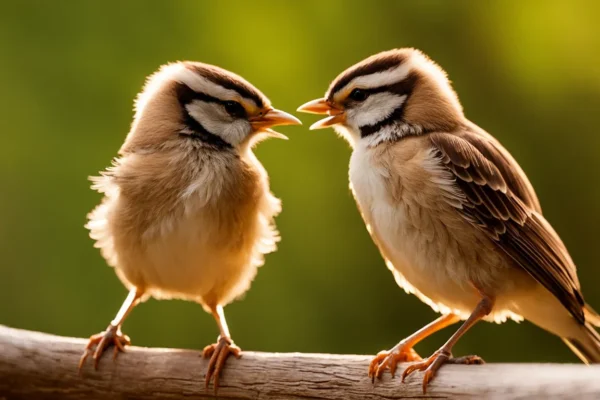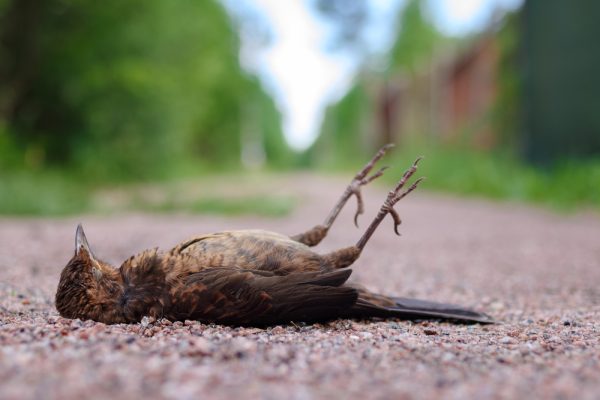Murmurations of starlings in perfect synchronisation swirling into shapes across the sky is one of nature’s most amazing displays. Hundreds of birds get together in flocks to fly in perfect formation; the biggest known murmuration consisted of over 6 million birds.
The Best Seasons to See Murmurations
The best times of year to see starling murmurations are in the fall and winter when roosts in the autumn often start to form in September. They peak in November, last through January, and last through March.
Each winter, the influx of migrating birds causes a substantial increase in starling populations in the United Kingdom. By November, most of our transient guests had made their way here, and large group roosts are held every night until March when non-native starlings start to migrate back to their breeding territories.
Typical Murmuration Times of Day
The magical times of day when starlings usually perform their soaring feats are dusk and dawn.
These seem more captivating against the backdrop of twilight. Huge flocks gather and fly in tandem before making their way to their nighttime roost places. They swoop through the sky and combine to form a variety of shapes and patterns. About an hour and a half before the sun sets, activity may start.
During the autumn and winter, starlings roost together every night; however, spectacular murmuration displays are not always present, and we are not entirely sure why, on some evenings, the birds may just peel off in smaller groups to go directly to their roosting spots, while on other nights a full, breathtaking show is offered.
It actually does seem to be potluck from one night to the next since murmurations happen in both severe gusts and the rain, suggesting that the weather isn’t a key impact.
Starlings may congregate to roost sooner on overcast, gloomy nights than on clear, brighter evenings.
Somerset’s Shapwick Heath Nature Reserve The magical times of day when starlings usually perform their soaring feats are dusk and dawn.
Top Starling Murmuration Sites in the UK
Coastal regions are well recognised for their murmurations and provide unparalleled picture ops overlooking the ocean, including the most striking and unforgettable environments. Tens of thousands of starlings may be seen murmuring nightly on Brighton’s West Pier, and Aberystwyth Pier is one of the best places in Wales to see them.
Another place to see starling murmurations is in an urban setting, especially in metropolitan parks where starlings are known to gather and feed throughout the day. Significant starling murmurations have been regularly observed from four rather significant residential centres: Eastbourne, Bognor Regis, Hastings, and Chichester. During the winter months, enormous murmurations also often pass over Gretna Green’s roofs.
Open fields and rural meadows are ideal locations for starling roosts to congregate at night. In Somerset’s Shapwick Heath, there is said to be one of the biggest starling murmurations in the United Kingdom.

The Perfect Experience for Observing Murmurations
The best tips for anybody hoping to see a starling murmuration are to dress warmly, go to the viewing spot at least an hour before dusk, and be ready to relax and watch the show develop. No two murmurations are alike, and finding the right one may require a lot of persistence and many nights of waiting.
While murmurations may be seen in any kind of weather, a dry, pleasant evening would undoubtedly provide a more comfortable viewing experience. One often-missed piece of advice is that murmurations don’t only occur at twilight; they may also occur at dawn, so it might be worthwhile to get an early start in order to see a pre-sunrise show.
Some locations linked to frequent sightings of murmurations include signs designating good viewing locations, binocular rentals available, and parking close by.
Murmurations and Photography
It may be extremely difficult to capture the utter grandeur of a starling murmuration on video, especially when you consider the poor lighting conditions around that time of day. One piece of advice is to take pictures of the whole flock using a wide-angle or mid-telephoto lens, then subsequently use a zoom lens to focus on the details.
When taking pictures of wildlife, there are a few guidelines to follow to make sure the surrounding environment and its native inhabitants aren’t unduly disturbed. Limit the amount of artificial light and avoid using flash photography.
Be mindful of other people in the vicinity who may be trying to record the same scene with their own cameras and avoid getting too near to wild birds or their roosting and nesting locations.
Somerset Levels: It may be very difficult to perfect the technique of capturing the utter grandeur of a starling murmuration on video.
Preservation and Deference
Numerous locations considered as excellent places to observe murmurations are found within nature reserves and conservation zones. To minimise disturbance to the birds in their natural habitat, vantage positions are selected that are a safe distance away from the roosting places themselves. Remain on public territory and resist the urge to intrude into private land!
It’s important to remember to respect the natural ecosystem and to stay away from any damage, disturbance, and excessive noise, just as with any birding or wildlife observation. Be careful not to blind any surrounding animals while using a torch to navigate your way back to a parking lot or exit point later.
Continuing the Journey
Many of the best places in the UK to see murmurations are found in coastal parks, wetland sites, nature reserves, and protected conservation zones.
It may be as satisfying to visit these reserves during the day, so planning a combined trip might result in more bird species sightings and plenty of other picture possibilities. Some locations have daytime guided tours, which may give helpful advice on the best locations to look for murmurations at dusk.
Advice for Novice Observers
The first time you go out in the hopes of seeing a murmuration, be prepared to not be rewarded since murmurations are erratic natural occurrences that can never be guaranteed.
The finest views and opportunities may be found on a clear, crisp night. No additional equipment is needed since murmurations may be seen in the sky without the need for binoculars.
If you are unsuccessful in making an observation on your first try, don’t give up; these are regular occurrences, and eventually your patience will be rewarded.
Cornwall’s Marazion Marsh RSPB Reserve Numerous locations designated as optimal murmuration viewing sites are found within nature reserves and conservation zones.
FAQs
What is the UK’s peak murmuration season?
Larger flocks of starlings start to assemble around the UK when the mating season finishes, and they are joined by visitors from northern Europe who come to spend the winter in our warmer environment. Murmurations begin to appear in September, but they don’t fully peak until November through January, when they persist until March.
Are there any guides available in the area to view murmurations?
You may join guided nighttime walks and excursions at several murmuration locations, such the Somerset Levels and Avalon Marshes, to see the starlings’ nightly roosting routines. You don’t have to join a tour or group to see these attractions, and in some places there aren’t many amenities, so don’t worry if you’d prefer do it alone.
Final Thoughts
Nothing quite compares to the spectacle of seeing a starling murmuration up close, even if you’ve only ever seen mind-blowing pictures or videos online.
With a little bit of luck, patience, and timing on your side, there’s a good chance you’ll soon have your own memories of one of the most amazing aerobatic displays in nature.
Put on warm clothes and visit a murmuration hotspot. For the least disruptive experience, follow the designated courses or routes and keep an eye on the sky with your camera ready.





![Beautiful Birds with Crazy Hair [images + IDs]](https://birdsology.com/wp-content/uploads/2023/02/18016157706_72101b31ff_b-600x400.jpg)
